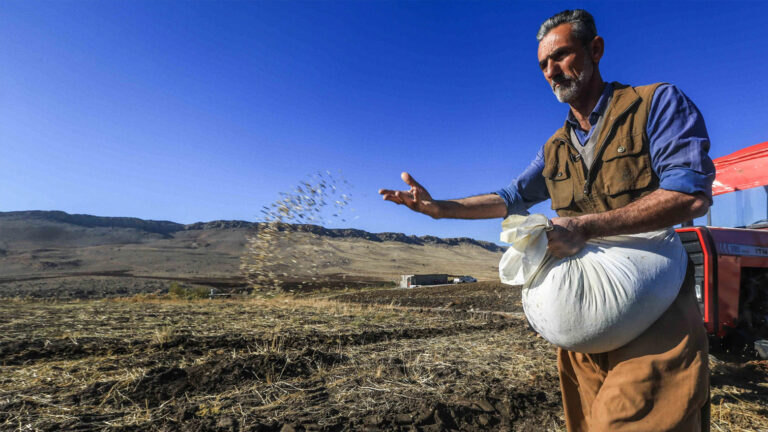
Overview:
Maximize your winter wheat crop with this expert guide designed for Iraq’s unique soil and climate.
In This Article:
- Soil testing and pre-treatment techniques
- Selecting the right seed varieties for yield and resistance
- Optimal irrigation plans and cold weather care
- Region-specific pest watchlists and organic treatment methods
Key Insight:
Preparation is key—modern winter wheat farming blends tradition with tech for best results.
About The Article
Winter Wheat: Season Prep Guide for Northern Iraq
A Fresh Season Begins: Prep Smarter, Grow Stronger
Winter wheat is one of Kurdistan’s most important crops, feeding families, supporting local bakeries, and providing income across the countryside. But in Northern Iraq, where weather extremes and variable soil conditions pose unique challenges, success depends on early and informed preparation.
This detailed guide walks through the essential steps and smart strategies for a productive winter wheat season in 2024–2025.
Step 1: Soil Testing & Pre-Treatment
The foundation of any healthy wheat crop is the soil. Farmers across Erbil, Ranya, and Koya are increasingly turning to soil test kits and mobile lab services to guide pre-season treatment. Here’s what they’re checking for:
- Nutrient levels: Especially nitrogen, phosphorus, and potassium
- pH balance for optimal seed uptake
- Organic matter content and signs of compaction
Recommendations based on these tests are now helping farmers reduce input costs and avoid over-fertilizing.
Step 2: Seed Variety Selection for Yield & Resilience
Not all wheat is created equal—and local experts are emphasizing the importance of choosing the right variety based on altitude, rainfall, and disease risk. Some popular and proven varieties in the region include:
- Sham-6: Known for its drought tolerance
- Sawa-4: High-yield in low-altitude zones
- Local heritage strains: Preferred for taste and traditional markets
Extension services are now promoting seed swaps and trials for climate-adapted varieties that can withstand early frosts or dry starts.
Step 3: Irrigation Planning & Water Conservation
Water is always a concern for winter crops. This season, new techniques are being encouraged to maximize water efficiency, such as:
- Laser-leveling fields to reduce runoff
- Drip tape systems for row irrigation where budgets allow
- Strategic irrigation during tillering and booting stages, when water demand peaks
Some cooperatives in Halabja have piloted rainwater collection tanks, offering low-cost irrigation backup during dry spells.
Step 4: Regional Pest Watchlists & Organic Solutions
Each year brings its own pest and disease challenges. This fall, farmers are being advised to watch out for:
- Wheat aphids in lower valley zones
- Rust fungus in damp, shaded areas
- Rodent infestations in older silo regions
Where possible, organic solutions are encouraged—such as neem oil sprays and natural predators like ladybugs and owls. Community-led pest monitoring groups are also becoming more common.
Final Checks: Equipment & Storage Readiness
Many losses occur after harvest due to improper storage or outdated equipment. So before planting even begins, farmers are urged to:
- Inspect plows, seed drills, and irrigation lines
- Clean and prepare silos, sheds, and sacks
- Organize labor for key stages like sowing, fertilizing, and early weeding
Workshops held this September in Zakho and Qaladze helped over 200 farmers perform pre-season readiness audits.
Summary & Key Insight
Key Insight:
Winter wheat success in Kurdistan is not just about timing—it’s about technology, teamwork, and tradition. With a bit of prep and the right resources, farmers are proving that modern methods can thrive alongside ancestral knowledge.
As temperatures drop and seeds go into the ground, a strong start now means a bountiful harvest come spring.
